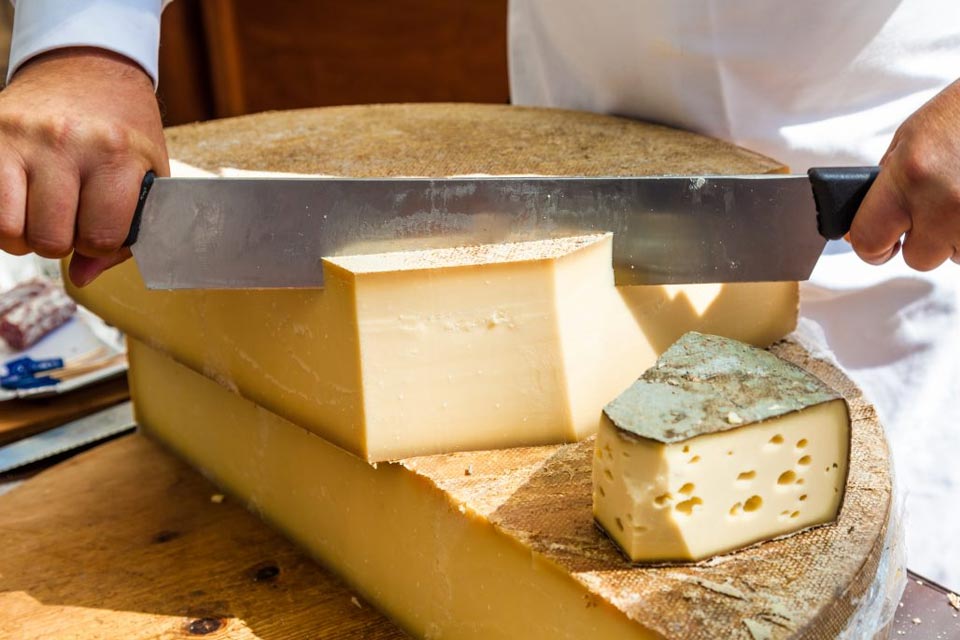The following information was extracted from the book “HOME CHEESEMAKING” by Neil and Carole Willman.
Acid Curd
The gel-like state that milk is brought to, when a high level of acidity is achieved. The acidity is produced by the activity of starter bacteria, and it precipitates the milk protein into a solid curd.
Acidity
The amount of acidity (sourness) in the milk. Acidity is an important element in cheesemaking and it is produced by cheese starter bacteria.
Ammoniated
A mould or washed rind cheese that is overripe and smells or tastes strongly of ammonia.
Annatto
A natural vegetable extract (from the seeds of a South American bush Bixa orellana) which is used to colour cheese yellow, orange or red.
Bacteria
Microscopic single cell organisms found almost everywhere. Lactic acid-producing bacteria are useful and essential in the production of most cheeses. Bacteria linens A red bacteria which is encouraged to grow on the surfaces of cheeses like Brick, Havarti, Tilsit and Limburger, to produce a characteristic flavour. The full name of the organism is Brevibacterium linens.
Bacterial surface
Cheese that has a heavy growth of -ripened cheese bacteria on the surface, to produce a distinct flavour. Brick and Limburger are examples of bacterial surface ripened cheeses.
Blind
Usually refers to a Swiss cheese types that have no holes or eyes in it.
Body
The inside of a cheese which is assessed by graders using terms such as, firm, weak, pasty, flaky, close, short etc.
Brine
A mixture of salt and water. Cheese salt, rock salt or table salt can be used. Do not use iodised salt.
Brined cheese
A cheese immersed in a brine solution.
Butterfat
The fat portion in milk. Butterfat can vary from 3.6 to 6.6 percent of the milk. Sometimes called milk fat.
Calf rennet
Calf rennet is derived from the fourth stomach of a milk-fed calf. It contains the enzyme Chymosin which has the ability to coagulate milk. Animal rennet is commonly available in liquid form.
Cheddaring
The process during Cheddar cheesemaking after the whey is drained from the curds. The curds are then kept warm for approximately 90 to 120 minutes.
Cheesecloth
A coarse to fine cloth either cotton or plastic used to drain curds, line cheese hoops and other miscellaneous uses.
Cheese salt
A coarse flake salt. Salt not iodised is the most desirable type to use in cheesemaking.
Cheese starter
A bacterial culture added to milk as Culture the first step in making many cheeses. The bacteria produce acid in the milk and in the curds. There are different categories of starter culture; mesophilic, thermophilic, gas producing and aroma producing.
Cheese Wax
A pliable wax, usually a mixture of paraffin and microcrystalline wax, with a low melting point which produces an airtight seal and a moisture barrier around the cheese. It is applied to rinded cheeses before maturing, or to other cheeses prior to sale to give an attractive appearance.
Coagulation
The solidification of milk through the action of acid and/or enzymes. The enzymatic method uses a product known as rennet.
Cooking
A step in cheesemaking during which the cut curd is heated to assist in whey removal from the curds.
Curd
The coagulated part of milk, consisting of solid protein with some fat, lactose and residual whey.
Cutting the curd
A step in cheesemaking in which the curd is cut into equal sized pieces.
Draining
The step in cheesemaking in which the whey is separated from the curd.
Dry matter
All parts of a cheese excluding the moisture: ie. fat, protein, lactose and minerals.
Enzyme
The active component of rennet is an enzyme. An enzyme accelerates a reaction, in the case of rennet, the coagulating or setting of the milk.
Eyes
Small or large holes in a cheese produced after gas formation by selected bacteria.
Fat in dry matter
The proportion of fat in a cheese, expressed as a percentage of the dry weight (fat in dry matter), not total weight. Most cheeses have a fat in dry matter content of around 45-50%. The actual fat content of the cheese is usually in the range of 25-35%.
Grana
A general term for hard Italian grating cheeses like Parmesan.
Homogenisation
A mechanical process that reduces the size of the fat globules of milk, so that the cream will no longer rise to the surface of the milk. Hooping A step in cheesemaking during which the curd is placed in a cheese mould (hoop). The cheese hoop will help produce the final shape of the cheese, and assists in whey drainage from the cheese.
Lactic acid
The acid produced in milk or curd during cheesemaking. Cheese starter culture bacteria break down the milk sugar(lactose), and produce lactic acid as a by-product.
Lactose
The sugar naturally present in milk. Lactose can constitute up to five percent of the total weight of milk. It is not a very sweet sugar compared to glucose.
Maturing
A step in cheesemaking in which the cheese is stored at a particular temperature and/or relative humidity for a certain time, in order to develop its distinct flavour and/or for the body to breakdown.
Mesophilic starter
Lactic acid-producing starter bacteria which is used to produce cheeses when the cooking temperature is 39°C or lower.
Microbial rennet
See vegetarian rennet. Milling A step in cheesemaking, during which the curd is diced into smaller potato chip like pieces before being salted.
Mould-ripened
A cheese which has matured with Cheese the assistance of a mould, growing on the surface or inside. Two types of mould are most common in cheesemaking. They are blue mould for the blue cheeses and white mould for Camembert and related cheeses.
Pasta filata
Italian expression for plastic-curd cheeses, where thin strips of cheese curd are placed into a hot water bath and worked up until homogenous. Mozzarella is an example of a pasta filata cheese.
Pasteurisation
The heating of milk by either batch method ie. 61°C and holding it for 30 minutes or by a high temperature/short time method of 72°C and holding for 15 seconds. The aim is to destroy pathogenic organisms which may be harmful to humans. An alternative of heating the milk to 68°C and holding for one minute is usually more time efficient for the home cheesemaker.
Penicillium candidum
A white mould which is encouraged to grow on the surface of a number of soft mould-ripened cheeses including Camembert and Brie.
Penicillium roqueforti
A blue mould which is encouraged to grow on the surface and in the interior of a variety of blue cheeses, such as Stilton, Gorgonzola, Roquefort and Blue Vein.
Plastic curd
Generic term for cheese made by immersing the curd in hot water and working it until it becomes elastic and can be moulded into the shape required. (see also, pasta filata)
Pressing
A step in cheesemaking during which the curds are placed in a cheesecloth-lined hoop or mould, then placed under pressure to remove more whey and create a closer textured cheese.
Rennetting
The step in cheesemaking in which rennet is added to milk in order to bring about coagulation.
Ripening
A step in cheesemaking just after starter addition and before rennetting in which the milk is allowed to undergo an increase in acidity, due to the activity of cheese starter culture bacteria. Sometimes the term ripening is used to indicate maturing. It is less confusing to use the term maturing in this context.
Rind
Outer coating of a cheese formed by surface drying, often treated by rubbing, brining, oiling, blackening or other methods to produce the desired characteristics. Natural rinds are usually edible, synthetic rinds made by adding a layer of other substances may not be.
Salting
A step in cheesemaking in which coarse salt is added to the curds before moulding or to the surface of the finished cheese. Alternatively some cheeses are salted by immersion in a brine solution.
Soft cheese
A cheese which is not pressed, contains a high moisture content, and is eaten very soon after production.
Stabilised camembert
A term used to describe a style of Camembert where the pH is stabilised by the use of type E starter. Also referred to as Camembert (Modern) style
Thermophilic cheese starter
Used for making cheeses which have higher cooking temperatures such as a Stabilized Camembert or many Italian and Swiss cheeses require a thermophilic culutre.
Vegetarian rennet
A product used to coagulate milk. It is produced by either yeast or bacteria. The enzyme is extracted from the cells then filtered and is free of any of the yeast or bacteria.
Whey
The liquid portion of milk which separates from the curds after coagulation of the milk protein. Whey contains water, milk sugar, whey proteins, minerals and some fat. It should be a clear greenish colour and not milky.
Whey protein
Protein in milk which is not precipitated by the addition of rennet. Whey protein remains in the whey and can be precipitated by high temperatures to make Ricotta.

